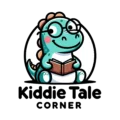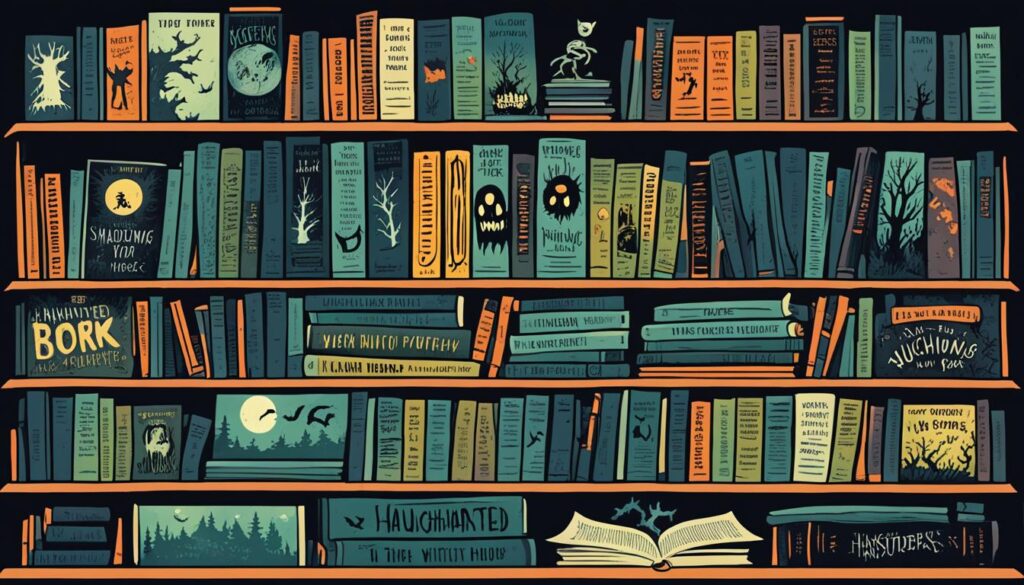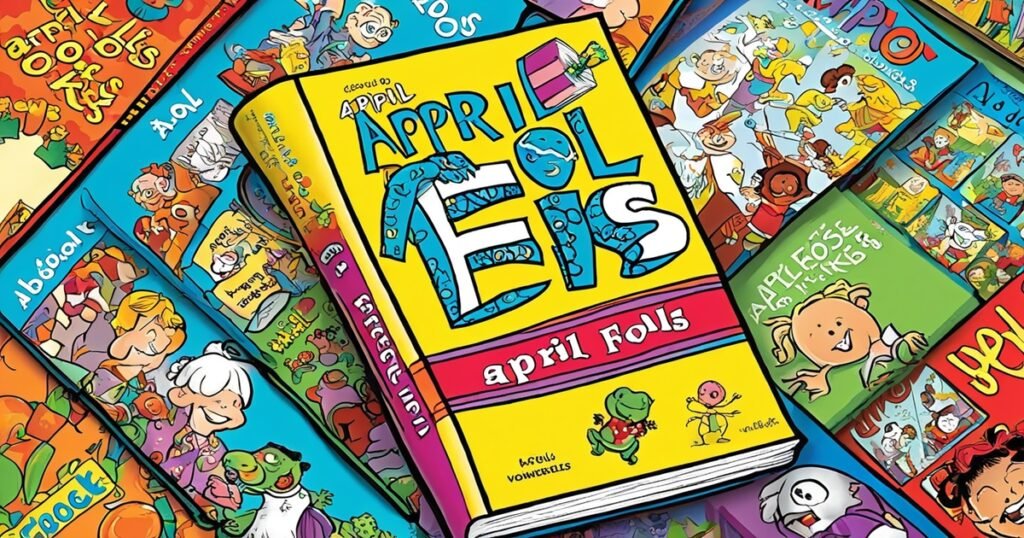The allure of horror books for teens is undeniable, providing a gateway to worlds where the unimaginable becomes reality and the thrills are as unrelenting as the turning pages. For teens seeking to immerse themselves in terror not just during spooky seasons but all year round, the market offers a wide array of chilling tales. From the vengeful intrigues of an isolated island in Gretchen McNeil’s “Ten,” inspired by Agatha Christie’s classic murder mystery, to the deceptive peace of a summer camp in Ryan La Sala’s “The Honeys,” these stories promise unsettling twists and unyielding suspense.
Table of Contents
- Key Takeaways
- Why Teens are Mesmerized by Horror Fiction
- Setting the Scene: Compelling Themes in Teen Horror
- Top Classic Horror Novels for Teenagers
- Contemporary Horror Tales: The Modern Terrifying Reads for Teens
- New Cult Classics: Elevating the Horror Genre in Teen Collections
- Horror Books for Teens: Titles That Will Keep You Up at Night
- The Art of Fear: Unique Storytelling Approaches in Teen Horror Fiction
- Integrating Horror into Teen Education: Classroom Reads
- Conclusion
- Source Links
Key Takeaways
- Gretchen McNeil’s “Ten” offers an intriguing spin on a classic murder mystery.
- “The Honeys” by Ryan La Sala introduces a chilling deception lurking in a peaceful summer camp.
- The horror genre for teenagers provides an engaging escape into realms where reality morphs into the unimaginable.
- Teen horror narratives offer suspenseful plots with unexpected twists and turns.
- Such books can be enjoyed not only during the Halloween season but throughout the year.
Why Teens are Mesmerized by Horror Fiction
The allure of scary books for young adults is intriguing yet universally acknowledged. The question that then arises is ‘Why are teens especially drawn to terrifying reads? Let’s delve deeper to discover the magnetism of horror fiction for teens.
The Psychology Behind the Thrills and Chills
The fascination for chilling tales for adolescent readers can be attributed to the psychological thrill that the horror genre provides. It is not just about the spine-chilling narratives, but also about the controlled engagement with fear. This genre introduces teens to the macabre and the unknown, allowing them to confront their anxieties and fears in a safe environment. The ability to close the book when the tension builds up too high gives them a unique form of control, enabling them to test their own boundaries of comfort and fear.
The Evolution of Teen Horror Novels
The horror fiction for teens has undergone considerable evolution over time, making it increasingly relevant to the modern reader. From the iconic works of authors like Christopher Pike and R.L. Stine that once dominated the bookshelves, the genre has transformed to resonate with the shifting tastes and concerns of the new generation. Modern horror no longer merely focuses on supernatural horrors, but also mirrors the complexities of high school dynamics and explores the dark side of social media. Despite these changes, the genre’s essential objective – to thrill and chill – remains steadfast, ensuring that it continues to be a key component of young adult literature.
Setting the Scene: Compelling Themes in Teen Horror
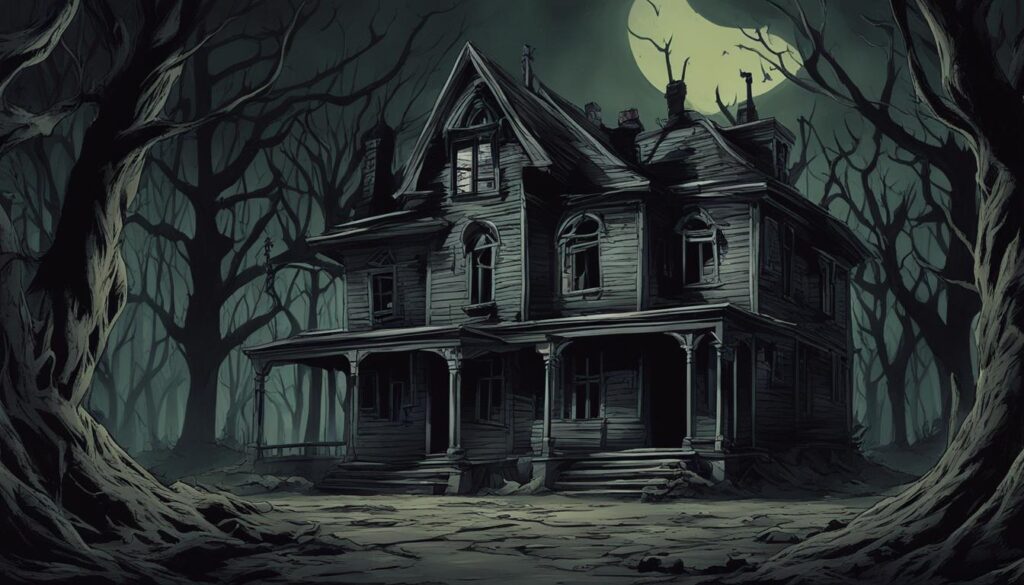
In the realm of teen horror novels, certain themes consistently captivate and terrify its young adult readers. The most prominent of these are the supernatural elements and the sense of mystery and suspense.
Exploring the Supernatural Elements
Supernatural elements have always been a staple in teen horror novels, often serving as the catalyst for the eerie and unexplained phenomena that propel the story forward. Whether it’s malignant forces escaping the grips of novice witches in Alexis Henderson’s “A Wicked Magic” or a haunted fixer-upper in Danielle Vega’s “The Haunted,” these novels blend the ordinary with the otherworldly. The result is a captivating concoction of horror stories for young adults that blurs the boundaries between what’s real and what’s not.
The Presence of Mystery and Suspense
In addition to supernatural elements, a high degree of mystery and suspense is woven into these narratives, making them well-loved horror books for teens. In Kara Thomas’s thrilling “The Cheerleaders,” the mystery envolves the truth behind a series of deaths five years prior. This palpable suspense keeps readers on their toes, eager to discern the reality behind all the shrouded secrets. Likewise, Erin A. Craig’s “House of Salt and Sorrows” intertwines familial tragedy and ghostly apparitions with a retelling of “The Twelve Dancing Princesses,” resulting in a suspenseful tale that sends chilling waves of anticipation with every turn of the page.
Top Classic Horror Novels for Teenagers
For those captivated by the mystery and thrill of horror novels for teenagers, appreciating classics that have shaped the genre is essential. Here is a selective list that not only captures timeless terror but resonates with young readers for their compelling storytelling and enduring sense of dread and wonder.
-
Mary Shelley’s “Frankenstein”: Conceived when Shelley herself was a teenager, this monumental contribution to fiction is a cornerstone of classic horror. It explores themes of ambition, creation, and ethical boundaries in a powerful narrative that continues to fascinate hordes of readers.
-
Stephen King’s “Carrie”: Since its publication, this chilling tale of a bullied teenager who finds herself wielding terrifying telekinetic abilities remains a captivating classic. Its themes of revenge and the consequences of societal rejection continue to resonate with teen audiences.
-
“The Dark Descent of Elizabeth Frankenstein” by Kiersten White: A fresh interpretation of Mary Shelley’s classic, this narrative revisits the story of Frankenstein from a unique perspective, offering an atmospheric and spine-chilling exploration of the famed storyline.
-
Shirley Jackson’s “We Have Always Lived in the Castle”: In this unsettling story of the isolated Blackwood sisters, Jackson masterfully induces a sense of unease and curiosity—the quintessence of classic horror.
These classic horror books for teens are potent reminders of the origins of the genre and continue to inspire modern writers. Consumed from both intrigue and academic interest, these books promise to deliver a sense of wonder and an enduring feeling of dread that epitomizes the essence of horror literature.
Contemporary Horror Tales: The Modern Terrifying Reads for Teens
Today’s landscape of horror fiction for teens offers fresh narratives that breathe new life into classic frights, presenting them in novel forms. From graphic novels that combine striking visuals with chilling plotlines to contemporary tales reinventing time-tested horror story structures, modern-day teen horror is truly a fascinating realm.
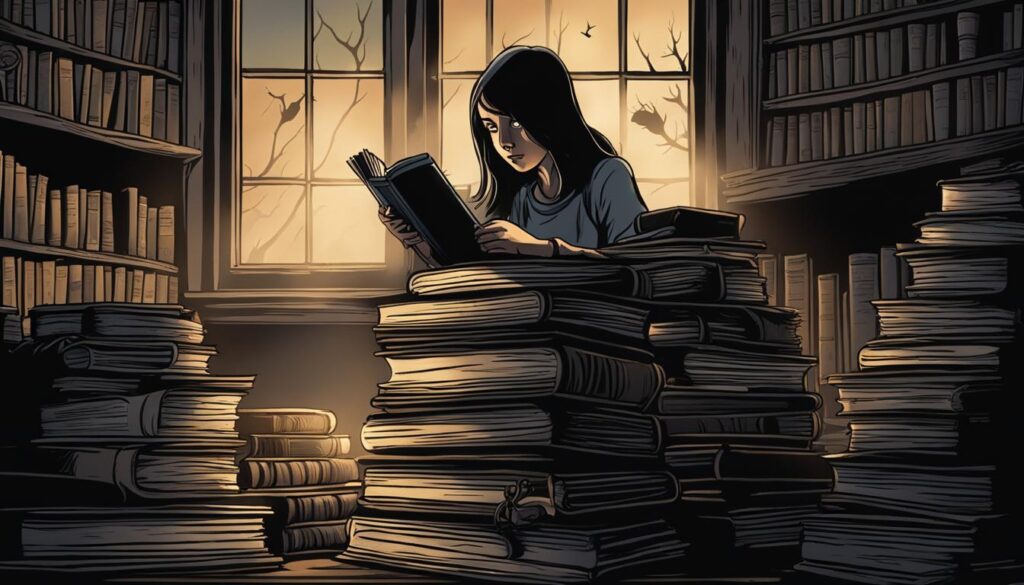
Graphic Novels and Teen Horror Fusion
Converging in the fascinating crossroad of graphic art and storytelling is a new wave of thrilling horror stories for young adults. Works like “Squad” by Maggie Tokuda-Hall seamlessly blend captivating graphics with eerie narratives, offering readers a dual immersion in visual artistry and riveting storytelling.
Fresh Spins on Time-tested Horror Tropes
Recognizable horror tropes are being reinvented in a plethora of contemporary tales. For example, novels like “You’re Not Supposed To Die Tonight” by Kalynn Bayron and “Hide” by Kiersten White inject fresh perspective into the classic ‘summer camp’ setting, adding innovative layers through final-girl narratives and deadly competitions. Moreover, we see the birth of sinister new archetypes, such as the murderous clown protagonist in Adam Cesare’s “Clown in a Cornfield” and the spine-tingling thrill of Gretchen McNeil’s “#MurderTrending,” where live executions become a perverse form of entertainment.
New Cult Classics: Elevating the Horror Genre in Teen Collections
The landscape of teen horror novels has experienced a noteworthy expansion, now encompassing a host of works that command a distinct cult appeal. Such novels masterfully juxtapose elements of terror and teen angst, delivering uniquely bone-chilling teen narratives that attain a status of modern classics within the genre.
| Cult Classic Book | Author | Description |
|---|---|---|
| “Lord Loss” | Darren Shan | As part of The Demonata series, this grim tale proficiently intertwines deep personal loss with dark fantasy. |
| “Anna Dressed in Blood” | Kendare Blake | A thrilling marriage of horror and suspense, navigating the relatable vicissitudes of adolescence. |
| “Bad Girls Don’t Die” | Katie Alender | Presents a seamless fusion of horror staples with everyday teenage tribulations. |
Noteworthy for their targeted appeal, these novels have served to raise the bar within the realm of scary books for young adults. Beyond simply offering thrill-filled pages, newer cult classics redefine the parameters of what makes a teen horror novel compelling in our present times, strategically combining elements of sophisticated terror with the formative trials of teenage life. These narratives pave the way for a host of future works, breathing life into the genre, and ensuring its dynamic evolution.
Horror Books for Teens: Titles That Will Keep You Up at Night
In the realm of horror novels for teenagers, many titles feature protagonists who embark on chilling adventures, unravel deep mysteries, and confront their darkest fears. These gripping tales provide teen readers with captivating narratives and memorable characters they can resonate with.
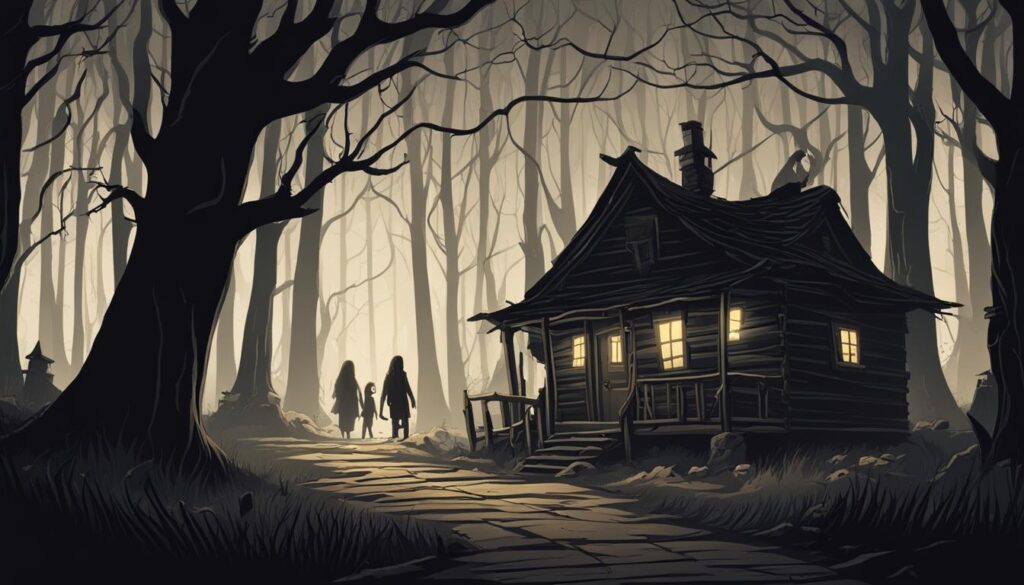
Teen Horror Stories with Strong Protagonists
Characters navigating treacherous realms of fear while demonstrating resilience and self-discovery are hallmarks of gripping teen horror fiction. For instance, Michelle Hodkin’s “The Unbecoming of Mara Dyer” is a psychological thriller that follows a protagonist grappling with the distortion of reality. Similarly, Neal Shusterman’s “Unwind” presents a stark dystopian world where the survival and autonomy of young characters take center stage.
Diverse Horrors: Inclusive Teen Narratives
Ensuring that chilling stories for teen readers are as inclusive as they are diverse is equally important. Several novels in the genre achieve this by representing a broad spectrum of experiences and backgrounds. “Pet” by Akwaeke Emezi and “Coraline” by Neil Gaiman, for example, challenge young readers with profound tales of horror interlaced with social commentary and an exploration of bravery against otherworldly adversaries.
The Art of Fear: Unique Storytelling Approaches in Teen Horror Fiction
Horror stories for young adults have evolved tremendously over the years, transitioning from simple ghost stories to complex narratives that delve into the characters’ deepest fears. Today’s engaging teen horror novels use unique storytelling techniques to create immersive horror reading experiences for their audience.
First-person Narratives to Evoke Intimacy and Fear
One powerful technique employed by authors of teen horror fiction is the use of first-person narratives. These narratives place readers directly in the mind of the protagonist, creating a strong sense of connection and intimacy. This intimate vantage point allows readers to share in the character’s dread, making the chilling experiences feel close and real.
“The Haunted” by Danielle Vega and “The Cheerleaders” by Kara Thomas are excellent examples of first-person narrative approach, where readers find themselves living the protagonist’s fears, creating a highly immersive and terrifying reading experience.
Using Unreliability and Mystery to Enhance Suspense
Unreliable narrators and layers of mystery are other creative storytelling techniques used to heighten suspense in teen horror fiction. The unreliability of the narrator builds an atmosphere of uncertainty, increasing readers’ suspense as they are left questioning every detail, wondering what is real and what could be a figment of the protagonist’s imagination.
Perfect examples of applying this technique include “I Hunt Killers” by Barry Lyga and “One of Us Is Lying” by Karen M. McManus; both novels keep readers on edge, hooked on the uncertainty that amplifies the horror until the final unnerving reveal.
| Author | Title | Technique |
|---|---|---|
| Danielle Vega | The Haunted | First-person Narrative |
| Kara Thomas | The Cheerleaders | First-person Narrative |
| Barry Lyga | I Hunt Killers | Unreliable Narrator |
| Karen M. McManus | One of Us Is Lying | Unreliable Narrator |
Whether utilizing the intimacy of a first-person narrative or the suspenseful uncertainty of an unreliable narrator, these unique storytelling approaches provide teen readers with an engagingly terrifying horror reading experience.
While the storytelling techniques can vary widely, their goal remains the same: to immerse readers in a world of fear, mystery, and suspense, engrossing them from the very first page to the last.
Integrating Horror into Teen Education: Classroom Reads
Integrating educational horror fiction into a teen’s academic experience can lead to the valuable development of essential skills such as critical thinking and literary analysis. There are several horror books that have made a significant contribution to the teen curriculum and continue to serve as crucial instruments for educational development.

A classic example that is widely prominent in academics is “Frankenstein” by Mary Shelley. This iconic piece of literature not only provides an insight into historical context but prompts an examination of intriguing philosophical themes such as the consequences of unchecked ambition and the relentless quest for knowledge. Such themes are academically relevant and encourage learners to engage in thoughtful discussions and debates.
In contrast, contemporary offerings of horror novels blend chilling horror with profound topics, thereby adding depth to classroom readings. A noteworthy example is “A Monster Calls” by Patrick Ness. This book efficiently merges elements of horror with poignant themes of grief and loss. It is apt for exploring complex emotional topics and facilitates the process of understanding the depths of human instincts and emotions.
“Instructors are increasingly recognizing the capacity of horror to engage students, spur their imaginations, and encourage a deeper engagement with literature.”
This progression of integrating educationally relevant teen horror novels into academics is a testament to demonstrating the significance of horror as an entertaining source of education and critical development.
| Classics | Themes Explored | Contemporary Narratives | Themes Explored |
|---|---|---|---|
| “Frankenstein” by Mary Shelley | Consequences of unchecked ambition and the quest for knowledge. | “A Monster Calls” by Patrick Ness | Grief, loss, and coming to terms with reality. |
Conclusion
The intriguing world of horror books for teens spans a diverse and expansive range. It is as terrifying as it is captivating, promising a thrilling reading experience for every kind of young reader. From timeless classics that remain relevant through generations, to modern tales that creatively deconstruct and twist familiar horror tropes, the genre continues its exploration of fears and anxieties characteristic of adolescence.
These narratives not only scare and bewilder young readers but continually challenge them, underscoring the significance of horror in young adult literature. From bone-chilling mysteries, supernatural adventures to intense psychological thrillers, the best horror books for teens deliver unforgettable, electrifying experiences sure to leave a lasting impression.
This culmination of engaging storytelling and narrative artistry makes this genre a must-read for every teen. Whether they’re seeking tales to send chills down their spine, to immerse in an otherworldly adventure, or to unravel hidden depths through psychological thrillers, these books promise thrilling experiences that resonate far beyond the final chapter. Indeed, when it comes to essential spooky reads for adolescents, look no further than the expansive realm of the teen horror genre.
FAQ
What are some top thrilling horror novels for teenagers?
Some recommended picks for thrilling horror novels for teenagers include “Ten” by Gretchen McNeil, “The Island” by Natasha Preston, “Carrie” by Stephen King, and “Fear Street: The New Girl” by R.L. Stine. The horror genre offers a wide array of narratives to suit various preferences, from supernatural elements to psychological thrillers.
Why are teens interested in reading horror fiction?
The attraction to horror fiction for teens lies in the controlled engagement with fear it provides. These books allow young adults to explore the macabre and the unknown at their pace, offering an exhilarating yet safe confrontation with their anxieties. In addition, modern horror fiction often resonates with the concerns and experiences of contemporary adolescents, which adds to its appeal.
What are common themes in teen horror books?
Teen horror books often harness supernatural elements and mystery to drive their narratives. They may feature everything from the unexplained occurrences tied to witchcraft in Alexis Henderson’s “A Wicked Magic” or the haunted mysteries in Danielle Vega’s “The Haunted.” These captivating themes appeal to the curiosity and imagination of young readers.
Can you recommend some classic horror books for teens?
Several classic horror books continue to enthrall teen readers year after year. “Frankenstein” by Mary Shelley and “Carrie” by Stephen King are two examples of enduring classics in the horror genre for teens. Other timeless horror stories, like Shirley Jackson’s “We Have Always Lived in the Castle,” also promise to deliver an enduring sense of dread and wonder.
What are some modern, terrifying reads in the horror genre for teens?
Contemporary horror books for teens offer fresh narratives that rework traditional horror tropes into novel forms. Examples include “Squad” by Maggie Tokuda-Hall, a graphic novel, and “Clown in a Cornfield” by Adam Cesare which introduces modernized menacing characters. These books resonate with young readers due to their blend of horror, teen angst, and relatable experiences.
Are there horror books featuring strong protagonists for teen readers?
Yes! There are many teen horror books with memorable protagonists who navigate terrifying realms with resilience and self-discovery. “The Unbecoming of Mara Dyer” by Michelle Hodkin and “Unwind” by Neal Shusterman are examples of books that feature strong protagonists leading gripping horror narratives.
Can horror fiction be used effectively in a teen educational setting?
Absolutely. Integrating horror books into a teen’s educational experience can stimulate critical thinking and literary analysis. For instance, classic horror novels like “Frankenstein” by Mary Shelley provide historical context as well as philosophical exploration. Contemporary works, such as “A Monster Calls” by Patrick Ness, meld elements of horror with poignant themes of grief and loss.
